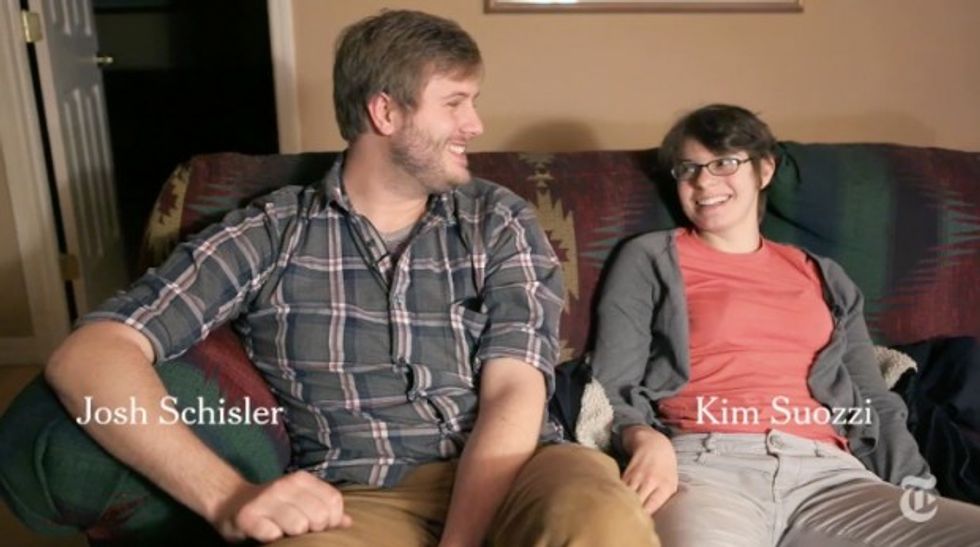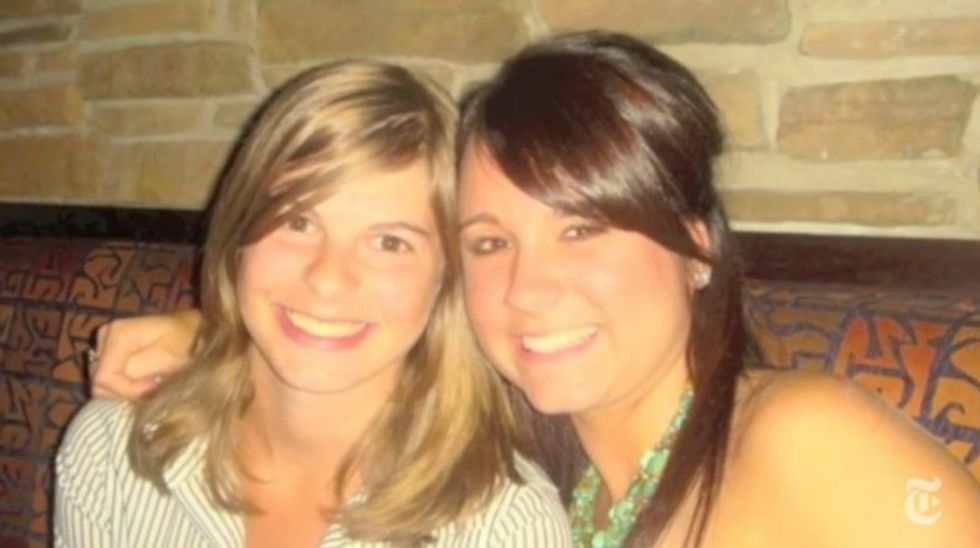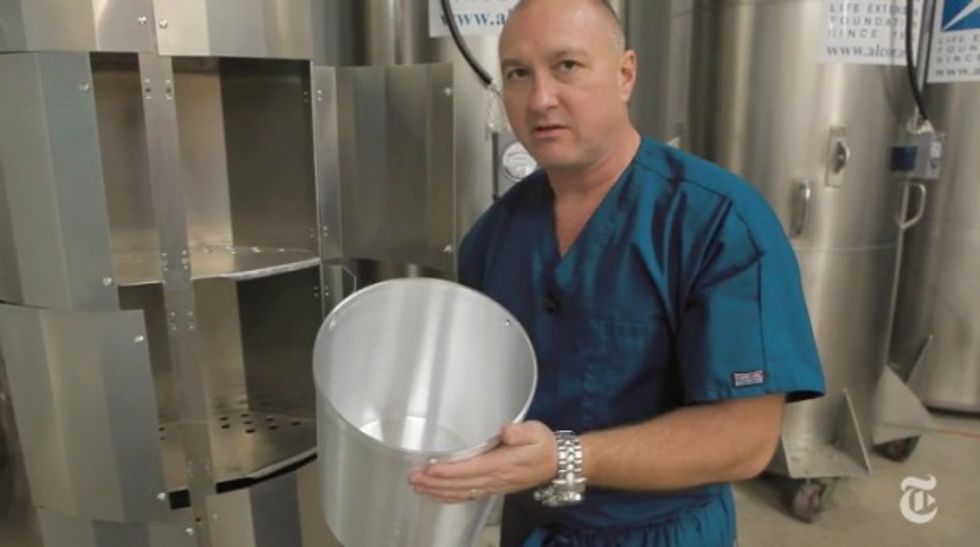
image source nytimes

Well before Kim Suozzi took her last breath at 23 years old, preparations were made to give her a chance at living again, in a way, sometime in the future.
Suozzi, who died of brain cancer on Jan. 17, 2013, made an emotional crowd-funding appeal in 2012 to raise $80,000 to "freeze" her brain — just her brain — at the Alcor Life Extension Foundation in Scottsdale, Arizona. The hope is that someday her mind and her memories could be revived.

"I think there's like a 1 or 2 percent chance of this working, so it's not like I'm counting on it, but I have a less than 1 percent chance of living so, put that next to 1 or 2 percent and it's definitely worth it," Suozzi, who studied neurolinguistics Truman State University, told the New York Times, which recently featured her journey in an extensive profile and video documentary.
In the video "Last Wishes," which followed Suozzi from 2012 when she was beginning her appeal to raise the funds through her cognitive decline to her death in 2013, she explained she was interested in cryonic preservation not because she's afraid to die.

"But I don't want to die knowing that I could have done something more," she said.
Watch the Times' video:
Here's more from the Times on the process — and many uncertainties and challenges — of cryonic preservation of the brain and what followers hope it could yield in the future:
The mapping technique pioneered by Dr. Denk and others involves scanning brains in impossibly thin sheets with an electron microscope. Stacked together on a computer, the scans reveal a three-dimensional map of the connections between each neuron in the tissue, the critical brain anatomy known as the connectome.Still arduous and expensive, the feat had so far only been performed on tiny bits of brain from euthanized laboratory animals, and it would be only one of many steps required to get to a simulation.
Moreover, the brain preservation methods scientists have used to perform such scanning, which involves encasing pieces of brain in hard plastic, had failed for anything larger than the size of a sesame seed. Nor could current methods for cooling and preserving brains at cryogenic temperatures, the only other known means to forestall decay, ensure that their fragile wiring was not damaged.
[...]
While it is widely agreed that the connectome encodes our unique memories and learned behaviors, Dr. Hayworth’s belief that a map of the brain’s synapses could one day be sufficient to reconstruct a mind is controversial.
According to Alcor, the process involves infusing the tissues to be preserved with protectants that would allow the cells to be cooled in a process called vitrification, which helps avoid damaging ice formation. The foundation goes on to state that nanotechnology could lead to "devices capable of extensive tissue repair and regeneration, including repair of individual cells one molecule at a time," which it goes on to state "could theoretically recover any preserved person in which the basic brain structures encoding memory and personality remain intact."

Until then, Suozzi's brain, identified by an Alcor Life Extension Foundation case study as Patient A-2643, remains stored at minus 300 degrees Fahrenheit or less, waiting for science and technology to perhaps one day catch up.
Read the New York Times full article.
(H/T: Reddit)